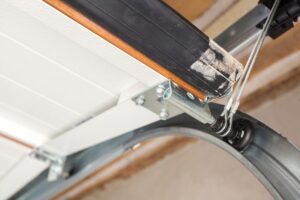Torsion springs on garage doors are what make it possible to raise and lower the door. They are controlled by hand cranks, pulleys, and torsion springs, and are extremely strong as they must be able to carry the weight of the door itself. If you have broken torsion springs on your broken garage door, or if you simply need to replace them due to wear, it’s important to have the job done by an experienced professional who can make sure that everything is set up correctly, or you could risk further problems down the road.
What are Garage Door Springs
Garage door springs help support the weight of your garage door and keep it in place. The torsion spring is the most common type of garage door spring you will find, which is a heavy coil that causes the tension to increase when compressed. If your garage door is not opening all the way or seems off balance, chances are you need a new torsion spring.
Replacing a Broken Garage Door Spring

Door springs are vital to the ability of your garage door to close. A broken or worn out spring can be a major safety hazard. You should never try to repair a broken spring yourself, as it is extremely dangerous. Always contact a professional like Colorado Overhead Door Company when repairing garage door torsion springs. One of the most common causes of a broken garage door spring is when someone tries to repair it on their own. Not only is this dangerous, but the repairs are often unsuccessful due to lack of experience or necessary tools.
Caring for Your New Doors After Installation
After installing your new door, it is important to care for the door to ensure that it lasts you a long time. Here are some things you can do after installation of your new doors to help them last as long as possible! You should inspect the whole door and make sure there are no nicks or scratches on the wood or metal parts of your door. Check to see if any parts need tightening with bolts or screws. Check for cracks in panels, locks, or hinges; replace damaged pieces with matching replacements if necessary.
